It's about as out-of-this-world as a planet can get—a harsh, desert world that orbits twin suns, home to marauding "Sand People," miniature cloaked Jawas and fiendish Hutts. But the Star Wars films' Tatooine—best known as Luke Skywalker's home planet—has firm roots here on Earth. It was in Tunisia that director George Lucas and his crew filmed many iconic scenes from Luke and Darth Vader’s childhoods, and the film sets remain an important part of Tunisian heritage today.
With its semi-arid and desert climates, southern Tunisia was a fitting double for Tatooine. Discussing the most recent Star Wars film with Empire magazine, actor Mark Hamill, who plays Luke Skywalker, acknowledged that Tunisia felt as remote as the fictional world it portrayed in Episode IV: A New Hope (1977). “If you could get into your own mind, shut out the crew and look at the horizon, you really felt like you were transported to another world,” he recalled. "I really was in a galaxy far, far away."
Tunisia is also home to Tatooine's namesake. While Lucas wanted the planet to be called Utapau, it came to his attention when filming Episode IV that the name resembled that of a female character in Star Trek. He proceeded to name the planet after the Tunisian city of Tataouine, which he and his crew used as a base to reach nearby sets.
From ancient Berber homes to a manmade desert igloo, here are real and imagined places of planet Tatooine you can visit today:
Slave Quarters, Residence of Anakin and Shmi Skywalker | Berber Ksar District, in and around Tataouine
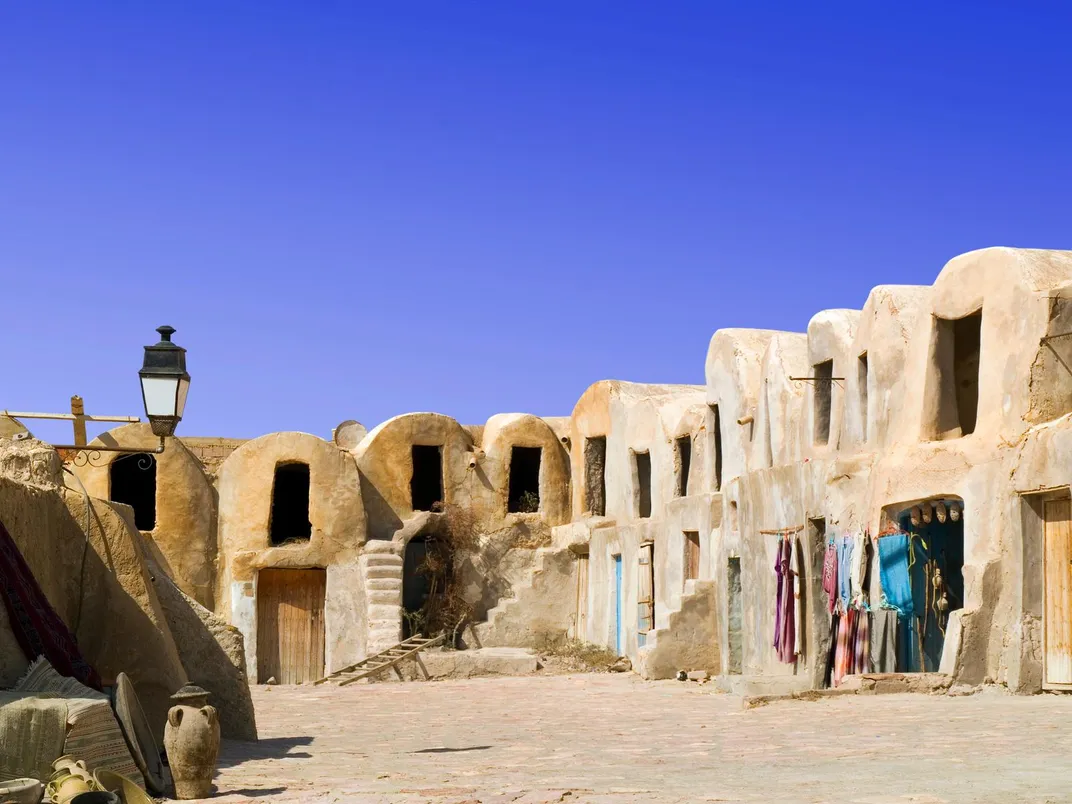
Despite being outlawed elsewhere in the galaxy, slavery persisted in Tatooine, especially in the spaceport of Mos Espa. Here, Anakin and his mother Schmi Skywalker lived in slave quarters under the supervision of Watto, a Toydarian junk dealer.
Lucas used three Tunisian ksour, or fortified Berber granaries, in and around the city the Berber city of Tataouine to depict the quarters: Ksar Hadada, Ksar Ouled Soltane and a ksar of Medenine. The Medenine ksar depicts the slave quarters during two pivotal events—when Anakin offers recently arrived Jedi Master Qui-Gon Jinn and Queen Padme of Naboo shelter from a sandstorm and when Anakin, having won his freedom, bids a tearful farewell to his mother.
Featuring multi-story ghorfas, or vaults, the ksar's unique shape was a product of circumstance. Forced to the hills of southern Tunisia by invaders in the 11th century, semi-nomadic Berber tribes encountered terraced layers of hard and soft rock for the first time. To shield themselves from weather and invasion, the tribes carved dwellings and storage facilities into the soft rock, placing their food at the highest point in the village to avoid ransacking. While Berbers have assimilated over time with the Arab population, the ksar district remains a stronghold of Berber culture, and it is not uncommon to see men and women dressed in their traditional clothing—shawls and headscarves for the women and hooded capes for men.
Mos Espa Spaceport, Home of Anakin and Schmi Skywalker | Near Tozeur
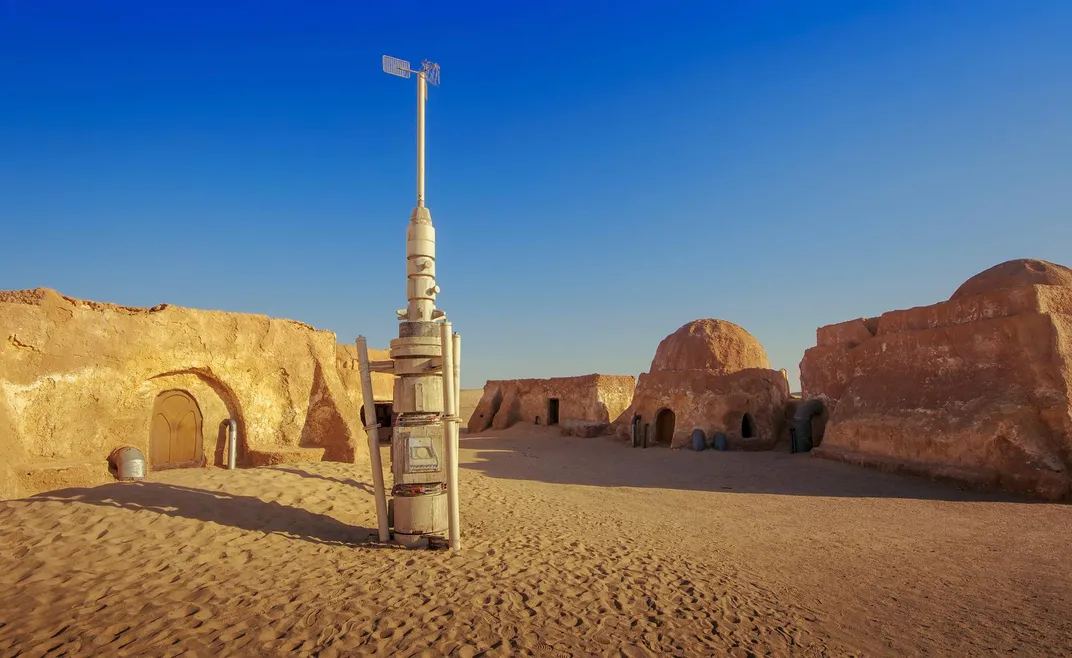
It's only a short drive from the oasis of Tozeur, but the abandoned set of Mos Espa spaceport on the Chott el-Gharsa salt flat feels something like the end of the earth. Familiar landmarks of the fictional town have withstood weather and time, including the spaceport gate, podracing area, Watto’s shop and the café of famed podracer Sebulba, whom Anakin defeats to win his freedom. Moisture vaporators and other props also remain, posing a stark contrast to the desert landscape and mustard-colored set. Only the first stories of buildings were constructed for the prequels, leaving computer-generated imagery to design the rest. The crew of the prequel triology spent close to five months at the location, forging the now well-beaten road to the Nefta-Tozeur highway.
Despite its location in the middle of the desert, the Mos Espa set is a frequented and beloved destination. Locals and international fans have banded together in recent years to save the set from encroaching dunes, and a music festival known as Les Dunes Electroniques drew thousands to the site for three days last February. A main square in Tozeur is notorious for its Star Wars souvenirs, and the set features prominently in a viral video from 2014, highlighting Star Wars locations to the tune of Pharrel Williams' "Happy."
Camel Head Rock | Near Tozeur
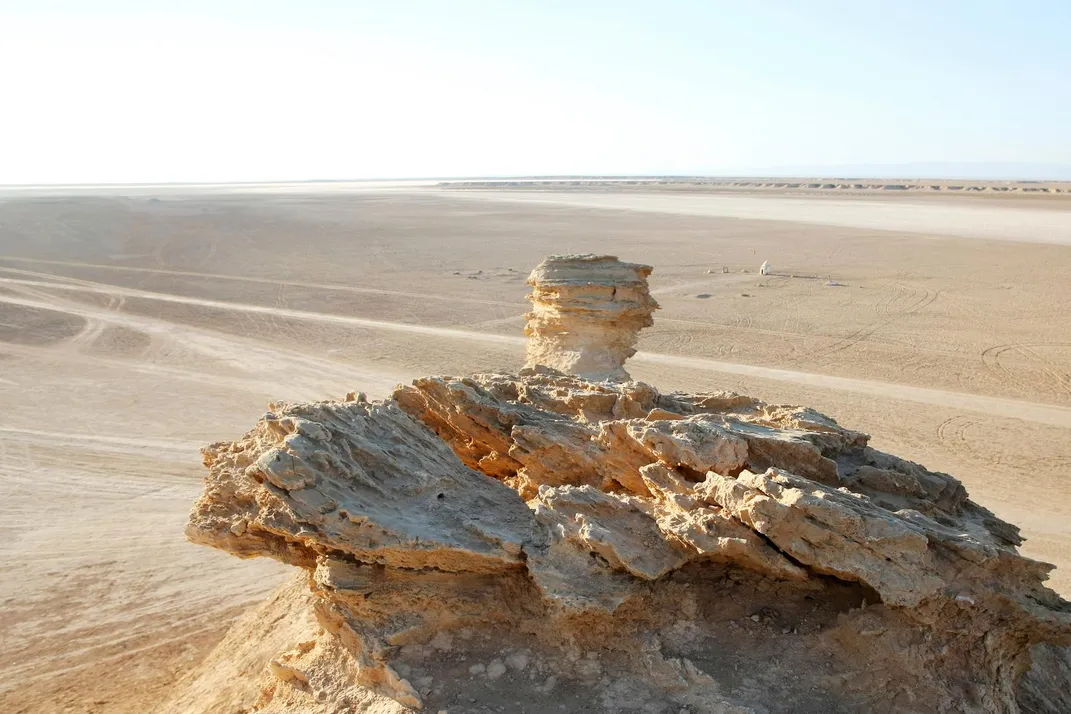
A few hundred meters from Mos Espa, protruding bits of sandstone known as Yardangs mark the spot where Qui-Gon and Padme land on Tatooine. Continuing east over a hill, the evil Sith Lord Darth Maul touches down on a structure known to Tunisians as Camel Head Rock, a popular location for viewing sunset. From the camel-shaped formation, the evil Sith Lord Darth Maul surveys the port of Mos Espa and sends Sith probe droids in search of Padme. He later pursues Anakin and Qui-Gon en route to their ship on Yardang Field.
Interior of the Lars Homestead, Luke Skywalker’s Teenage Home | Hotel Sidi Driss, Matmata
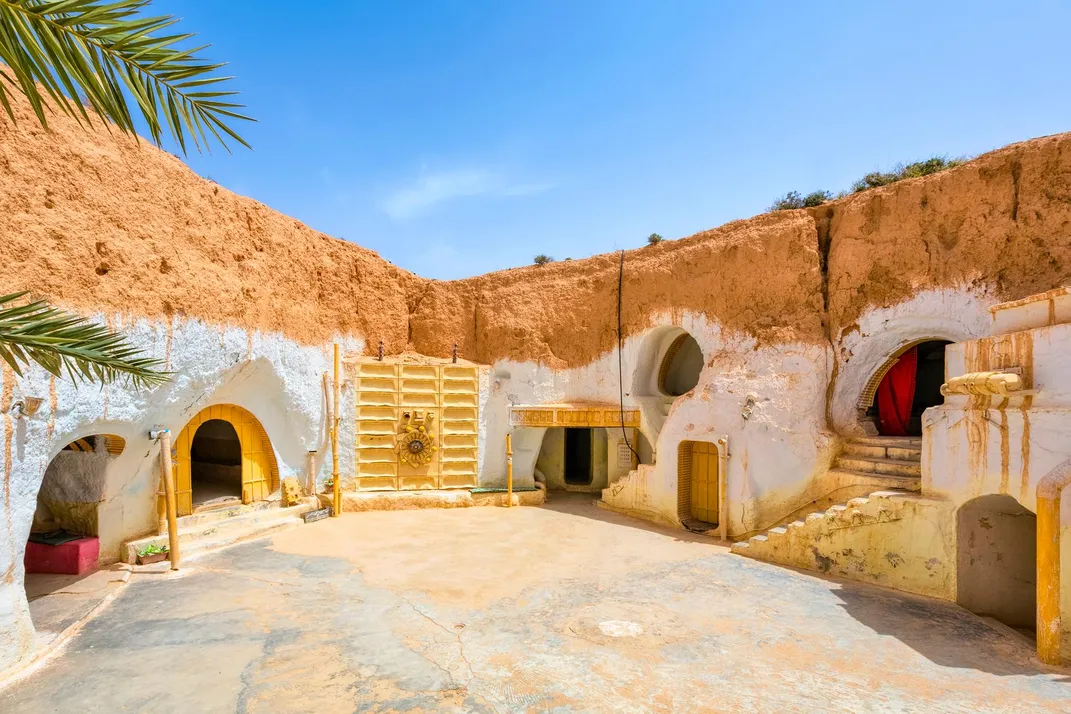
After the attack on the Jedi Order by Emperor and Darth Vader, Obi-Wan Kenobi takes Luke to live with his Uncle Owen Lars and Aunt Beru on their moisture farm. For the interior of the Lars homestead, Lucas chose traditional underground Berber cave dwellings known as troglodytes. Now the sight of Hotel Sidi Driss, the set retains most of the decorations from the Star Wars: Episode II – Attack of the Clones (2002) filming. The hotel offers a Star Wars-themed menu, and visitors can request to dine in the original Lars dining room, which opens up to Aunt Beru’s kitchen.
While the majority of Matmata’s small population lives in modern, conventional buildings, a handful of families live in the troglodyte buildings of old Matmata, inviting tourists into their naturally air-conditioned homes for a small price.
Krayt Dragon Ridge and the Lars Homestead Exterior | Chottt el Jerid Salt Flat, near Nefta
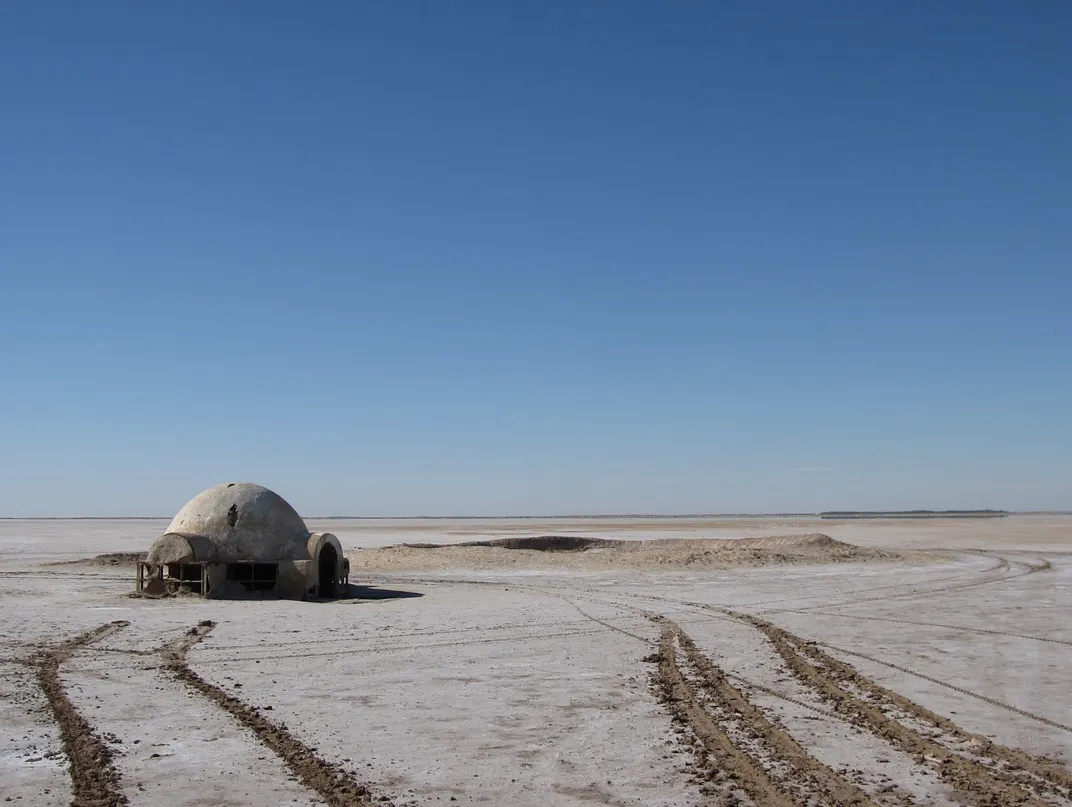
On the outskirts of Nefta, a small oasis town comparable to Tozeur, C3PO and R2-D2 crash down on Tatooine in search of Obi-Wan Kenobi. Upon landing, the droids encounter the imposing skeleton of a Krayt Dragon, signaling that Tatooine is anything but a welcoming planet. Left over from the1975 Disney film One of Our Dinosaurs is Missing, this massive, fiberglass prop came to Tunisia by chance when the crew chartered a Lockheed Hercules to transport forgotten equipment. Though the dunes have shifted, the skeleton remains buried beneath the sand.
Nearby on the Chottt el Jerid salt flat is exterior of the Lars family homestead, a tiny igloo set surrounded by craters to give the impression of an underground dwelling. Aside from Luke's childhood scenes, the exterior shot is used during gut-wrenching and pivotal moments: when Anakin learns that his mother has been captured by Tusken Raiders, when Obi-Wan delivers infant Luke to Owen Lars and when Luke discovers that stormtroopers have murdered his aunt and uncle.
Juntland Wastes | Sidi Bouhlel aka “Star Wars Canyon” near Tozeur
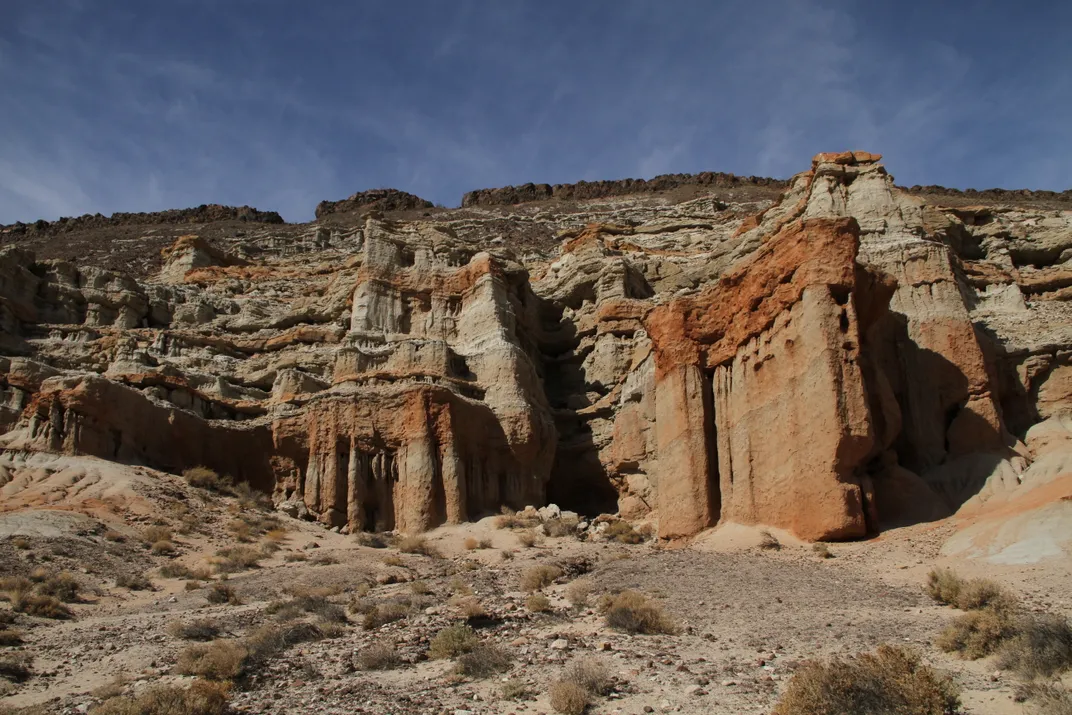
Sidi Bouhlel is a ravine outside of Tozeur that shares the name of a nearby marabout, or holy shrine. On Tatooine, it is the Juntland Wastes, home to the savage Tusken Raiders. Here, Jawas recapture R2-D2 after selling the droid to Uncle Owen, Tusken Raiders attack Luke in his search for R2-D2, and Obi-Wan Kenobi, mimicking the sound of a Krayt Dragon, saves the young Skywalker. "The Jundland Wastes are not to be traveled lightly," Obi-Wan Kenobi quips after the encounter. At the end of the road approaching the canyon is the parking lot for the Jawas’ scrap-collecting sandcrawlers, and stormtroopers massacre the Jawas at a site just outside the canyon's mouth. Due to the number of scenes filmed here, the Star Wars crew took to calling Sidi Bouhel “Star Wars Canyon.”
Mos Eisley Spaceport and Obi Wan’s House | Island of Djerba
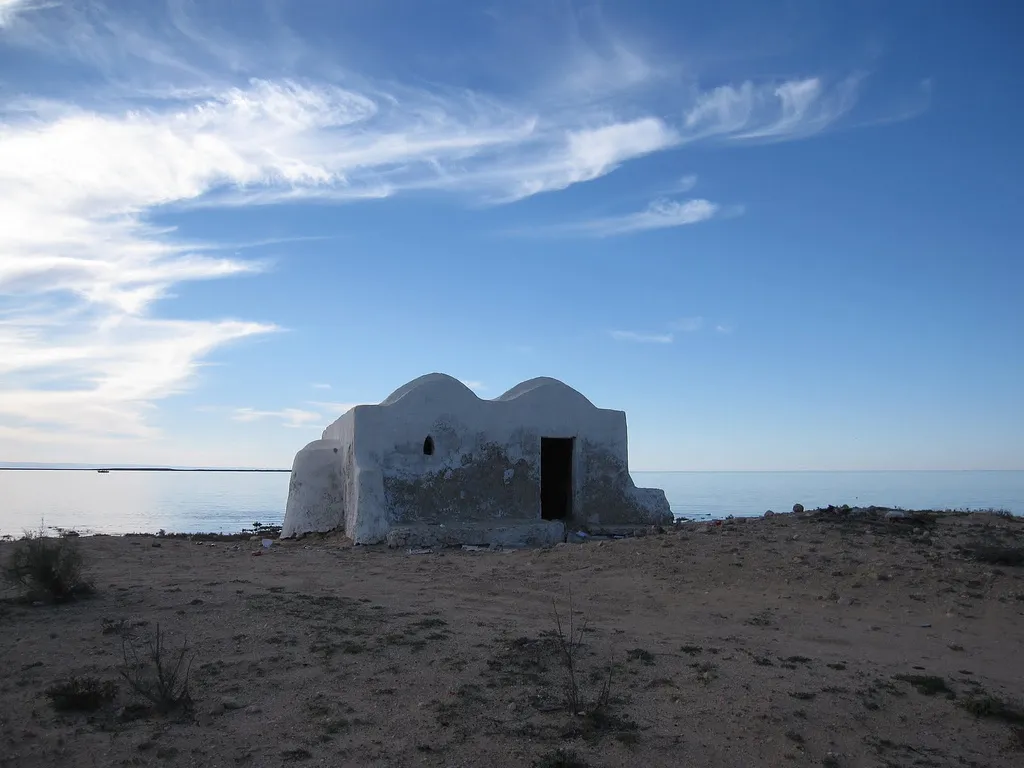
While most of Tatooine was filmed in Tunisia's desert, two key locations were shot within 20 minutes of each other on the tropical island of Djerba: Obi Wan Kenobi’s home and Mos Eisley spaceport. Set against the backdrop of the real-life Mediterranean, the buildings were edited to appear as desert outposts.
Obi-Wan's house, now used by fishermen as a storage facility, played a small but crucial role in the early films. After rescuing Luke from Tusken Raiders, the two return here and Obi-Wan presents the teenager with his father’s lightsaber. Soon after, R2-D2 plays a distress message from Princess Leia begging Obi-Wan to head to the planet Alderaan.
South along the coastal road is the cantina of Mos Eisley, described by Obi-Wan as a “wretched hive of scum and villainy.” It is in the cantina, a dimly lit tavern frequented by star pilots, that Obi-Wan and Luke meet Han Solo and Chewbacca, who agree to fly them to Alderaan. Originally a bakery, the structure is now out of use and surrounded by condominiums. However, the spirit of Star Wars lives on. In an interview from the Star Wars Complete Saga Blu-ray release, prequel producer Rick McCallum says that when visiting, he and his guide found one of original cupolas in a man’s vegetable garden as well as original cantina door, then propped up against a chicken coop about a quarter mile away. “We saw an older man, maybe in his late eighties, walking down the street with the original Star Wars t-shirt, and I didn’t have the heart to tell him that that was probably worth $10,000 now,” he recalls.
/https://tf-cmsv2-smithsonianmag-media.s3.amazonaws.com/filer/12/4d/124dd447-201c-46c1-8734-298f4d8d6e2c/22025062471_ba4719ac5c_k.jpg)


